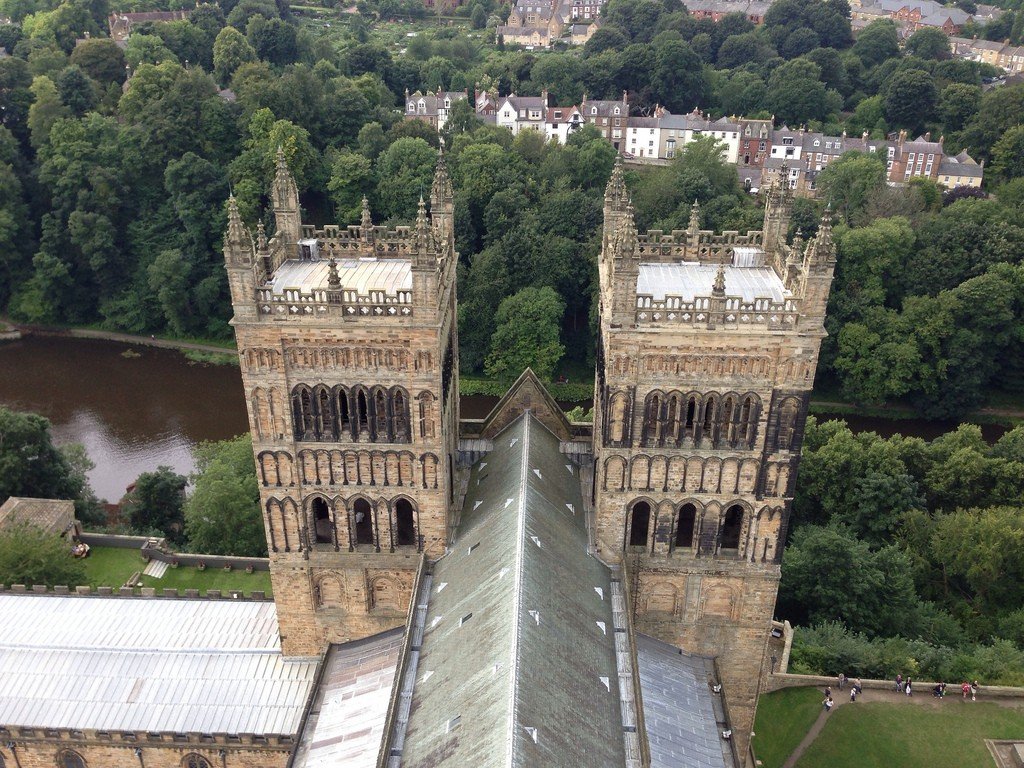Durham Cathedral
Durham Cathedral is the first UK landmark to be inscribed (along with neighboring Durham Castle) as a UNESCO World Heritage Site. The full name of the cathedral is Durham Cathedral of Christ, Mary and St. Cuthbert.
.
In the Middle Ages, the Bishops of Durham were the official representatives of the king and ruled North East England. They could use any means to keep the Scots in check and had power, wealth and influence that we now find it hard to imagine. They had their own army, mint and court at their disposal. The palace at Durham was a fortified castle, and the cathedral over the River Wyre was the center of their spiritual influence. It was, and still is, considered the most beautiful and picturesquely situated church building in the British Isles.










Norman Masterpiece
The huge viaduct spanning the northern part of the city offers a spectacular view of the castle and cathedral as a single secular and spiritual stronghold. If you get closer, to the lawn of Palace Green, the size of the cathedral is awe-inspiring. The impression is even stronger when you enter the semi-dark interior through the north portal, adorned with a ringed lion’s head.
.Construction of Durham Cathedral began in 1093 and was completed in 1274.It is an example of the High Norman style, strong, massive, majestic. The powerful cylindrical columns of the nave are carved with Byzantine and possibly Moorish motifs, reminding us that the Crusades greatly broadened the horizons of 12th century England. It is believed that the unusual giant rhombuses and chevrons, the lattice and dog-fang patterns carved into the stone columns, and the nerve vaults first appeared in Durham.
.On two sides of the cathedral are chapels with relics of saints. At the west end of the cathedral is the Galilean Chapel of 1170. Here, as in the nave, Moorish motifs can be felt, but more elegantly, in imitation of the Great Mosque in Cordoba. Light marble columns support the vault over the simple tombstone of the Rev. Beda. A monk from Jarrow on the River Tyne, who died in 735, wrote an “Ecclesiastical History of the People of the Angles” and a biography of St. Cuthbert, Bishop of Lindisfarne, especially revered in the north.
.The Holy Hermit
St. Cuthbertus rests beneath a simple slab with the inscription, “Cuthbertus”, set in the east side of the cathedral, in the Chapel of the Nine Altars, built between 1242 and 1280. Cuthbertus preferred to live alone, on the windswept, rocky Farne Islands, but life forced him to assume high office and great responsibilities.
.
He died in 687, but found no peace after his death. In 875, the Lindisfarne monks took his body off the island to hide it from the invading Vikings. For over a hundred years it was carried from place to place until one of the monks had a vision that Cuthbert should be buried in Dunholme, now Durham. Legend has it that William I ordered his tomb opened. He wanted to make sure that the monks were telling the truth and that the body was perfectly preserved. It is not known what the Conqueror saw, but it frightened him so much that he rushed to his horse, let it gallop and raced without stopping for 32 km to the crossing of the River Tees.
.In 1104, Cuthbert’s body was buried behind the east altar. His tombstone was smashed during the Reformation and the relics reburied. In 1827, the remains in a silk shroud, with a bejeweled cross, were retrieved from the grave again.
.
St. Cuthbert’s cross, his wooden coffin with relief figures of the apostles, and other treasures of Durham Cathedral are on display in the cathedral’s treasury.
.